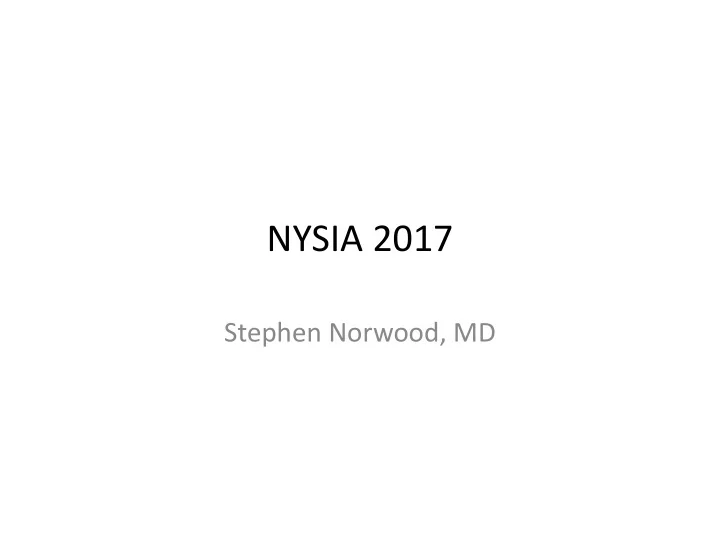

NYSIA 2017 Stephen Norwood, MD
Expanding the Formulary • Review top 150 drugs used in workers’ Identify new drugs compensation • Literature search Evidence review • Review title/abstract • Rank studies • Recommended? First‐line? (decides Y/N formulary status) Draft summary • Criteria (diagnosis, duration, dose, contraindications) • Evidence summary Update • Advisory board review Review NDCs • Stakeholder input monthly Publish
ating the study type 1. Systematic Review/ Meta‐analysis (1‐11) 2. RCT 3. Cohort Study 4. Case Control Series Must be indexed in PubMed 5. Unstructured Review 6. Nationally Recognized Treatment Guideline 7. State Treatment Guideline 8. Other Treatment Guideline 9. Textbook 10. Conference Proceeding/ Presentation Slides 11. Case Report and Description
4
5
6
If treatment guidelines are like speed limits then… 7 7
Set them too low… Guidelines that are too restrictive cause unnecessary delays, disputes, denials and friction, preventing workers from getting needed medical care, driving good doctors out of the system. 8 8
Set them too high… Bad guidelines are worse than having no guidelines. If you set speed limits at 150-200 mph, there will be a lot of road kill. 9 9
Set them just right… Guidelines should use UR judiciously, auto-approving care while limiting excessive/inappropriate utilization. Expertise in guideline 10 10 development/delivery always comes with a track record.
What states use guidelines?
TDI Medical Denial Rates post-ODG 12
Conclusions The decision to adopt guidelines were critical for Texans, as experience has now proven – Evidence‐based medicine doesn’t vary from state to state – Strong record of success; dynamic process for update development, highly efficient interface – Support tools are numerous including free ODG Helpdesk, training and education 13 13
Recommend
More recommend